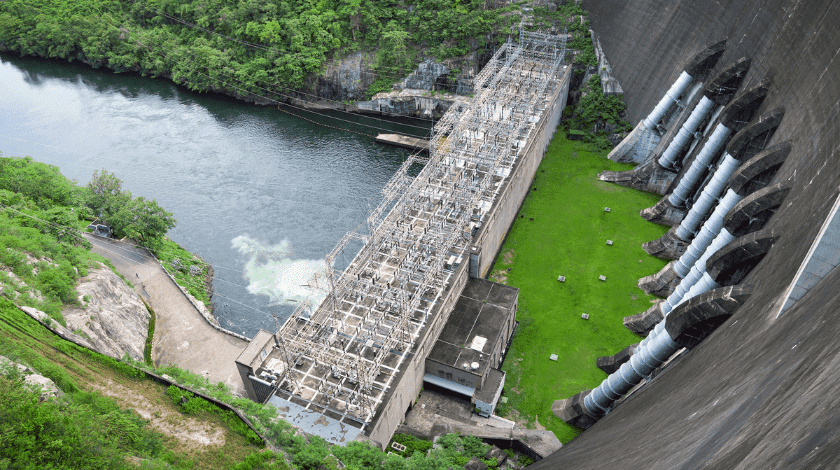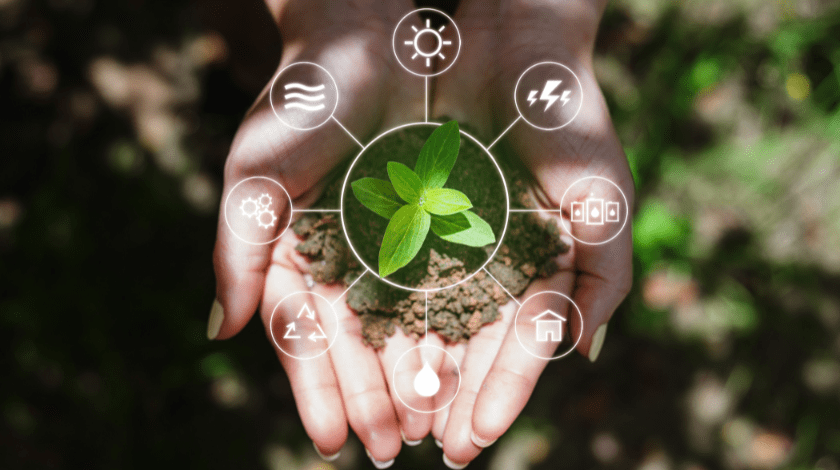The need for clean energy sources has become a widespread topic over the last decade. Governments across the world are currently calling for an end to fossil fuels and the embracing of new, sustainable sources of energy. But exactly what is clean energy and how does it work? Crown Energy answers this question, and more, surrounding clean energy.
What is clean energy?
The term “clean energy” is used to refer to electricity generated by facilities that do not emit greenhouse gases during the generation process. Mainly, this means zero-emissions of gases such as carbon dioxide. This is why clean energy is often also referred to as “carbon-free” energy.
What is the difference between clean energy, green energy, and renewable energy?
There are differences between clean, green, and renewable energy sources. Despite these various categories often overlapping, or being used synonymously in conversation, there all differ to some extent.
Clean energy
Refers to energy sources that do not create air pollution such as smog. These include wind, solar, hydro, geothermal, nuclear, and biomass energy.
Green energy
Refers to energy attained from natural sources. These include wind, solar, geothermal, biomass, and small hydro energy.
Renewable energy
Refers to energy sources that continuously replenish themselves. These sources will never be depleted and include wind, solar, all hydro, biomass, and geothermal energy.
Most green energy sources are also classified as renewable energy sources. However, this is not always the case.

Renewable energy sources such as geothermal and hydropower often harm their immediate environment as plants and dams are required to harness this energy.
It’s also argued that wind turbines may not fit the definition of green energy as they pose a danger to bird life and require land clearance to be established. Furthermore, some solar panels are constructed from hazardous materials, and depending on their location, larger utility-scale facilities can lead to habitat loss and land degradation.
Nuclear energy, although classified as a clean energy source, is another area of debate as the generation process produces nuclear waste. This waste does not come in the form of toxic barrels of luminous green sludge – it’s fuel that’s been used in a reactor once. This fuel is classified as high-level radioactive waste and must be stored and disposed of. Additionally, nuclear plants also produce what is classified as low-level radioactive waste. This waste includes items such as tools, gloves, and machine parts that have been exposed to radiation.These too must be disposed of.
So, although the industry has its own definitions and criteria for what is classed as clean, green, or renewable energy, it’s often down to personal perspective as to how each of these energy sources operate in the realm of clean energy.
The most common types of clean energy explained
There are several types of clean energy as defined by the relevant authorities. The following are examples of this energy type:
Wind energy
The wind is an abundant energy source that will never deplete. Certain geographical areas are windier than others, meaning the location of wind turbines needs to be carefully selected.
Wind energy is harvested using wind turbines. When the wind blows against the large blades of the turbine, it causes them to rotate. This movement creates energy which is harnessed and converted into electricity. This electricity can then be used to power homes, businesses, and any other buildings and facilities.

Solar energy
Solar energy is harnessed using solar panels. These panels are placed in areas that receive sunlight. The panels absorb the sunlight and convert it into AC electricity. This electricity can then be used to power households. You can learn more about solar power in our informative guide How to get solar panels for your home.
Hydropower energy
Hydropower energy, also known as hydroelectric energy, is usually generated using dams to divert the natural flow of a water source like a river. The force of the water’s movement is harnessed through piping to rotate turbine blades. This movement in turn powers a generator that converts the kinetic energy into electricity.This electricity is then used to power anything from homes to industrial facilities.
Geothermal energy
Geothermal energy is an energy source considered by many to be both clean and renewable. In Greek, geo means “earth” and thermal means “heat.”
Geothermal energy is generated through the harnessing of heat from within the Earth’s core. This energy type is harvested through a process that involves drilling deep holes into the ground. These holes provide a means for water and steam to rise to the Earth’s surface, where the water is then used to power turbines. These turbines then generate the electricity that can be used in homes and other relevant buildings.
Nuclear energy
This is another energy source considered by some to be clean. Nuclear energy originates in the core of an atom. In order to use this energy to create electricity, it must be released from the atom.
Using a process known as nuclear fission, atoms are split to form smaller atoms. This process creates heat. The heat is then used to boil water until it becomes steam, which is then used to power electricity-generating turbines.#

Biomass energy
Biomass is one of the earliest means of producing energy. There is a great deal of evidence suggesting that biomass was first used anywhere between 230,000 to 1.5 million years ago.
Biomass, now more commonly referred to as bioenergy is energy harnessed from plant and animal-based materials such as grasses, plant fibres, dung, and wood products.
Bioenergy is produced through various processes. These include combustion, chemical, thermochemical, and biological conversion.
This energy has several applications including power generation, heat generation, and the production of various fuels (biofuels).
Advantages of clean energy
Although many non-renewable energy sources are efficient, consistent, and easy to use, they can also negatively impact the environment.
Clean energy is perceived to bring with it numerous advantages, including several environmental, health, and economic benefits.
Environmental benefits
Perhaps the first and foremost benefit of clean energy is reduction in air and water pollution. The greater the worldwide usage of clean energy, the lesser the volume of pollutants released into, and contaminating, the environment.

Health benefits
Exposure to harmful radicals in the air caused by coal and natural gas plants have led to negative health effects in humans and other animals. These problems include neurological damage, and breathing problems, to name but a few.
Clean energy can lead to a major reduction in air and water pollution due to it replacing certain types of “dirty” energy generation.
All-in-all, cleaner air and water mean healthier plants, healthier animals, healthier humans, and a healthier planet.
Economic benefits
Clean energy holds the potential to stimulate financial growth through new job creation, new service provision, and new product development.
Furthermore, clean, renewable energy eliminates the need to locate, extract, and transport conventional fuels such as gas, oil, or coal for thousands of miles around the world.
The future of clean energy
As the worldwide demand for energy continues to grow, we need to take responsibility for our health and the health of our planet. By using clean, renewable, and green energy sources, it’s possible to reduce the negative impact energy generation has on our health and the environment.
Many countries are now adopting policies encouraging and even enforcing the use of clean energy sources. Due to the controlling nature of some of these policies, not everyone believes they have been solely implemented for the sake of the environment, but instead for financial gain (additional taxes, new technologies, etc.), and further control over the Earth’s population.
Whatever the reasons, it’s now claimed that renewable sources make up over one-third of the planet’s installed power capacity. The European Union has even declared its intention to become carbon neutral by the year 2050.

The future of clean energy is, potentially, a bright one. This depends heavily on responsibly developing these sources of energy to genuinely improve the state of the planet and the welfare of its population.


